28.06.2021
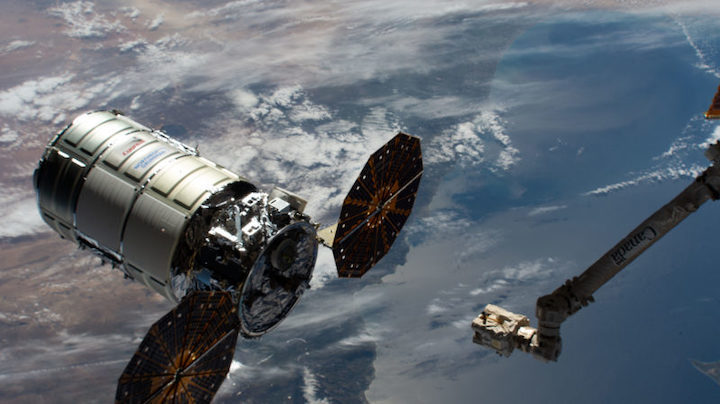
The Expedition 65 crew aboard the International Space Station (ISS) will bid farewell to a long-serving cargo ship on Tuesday, as an almost identical vehicle undergoes final preparation for its own launch, targeted No Earlier Than (NET) 10 August from Pad 0A at the Mid-Atlantic Regional Spaceport (MARS) on Wallops Island, Va.
Northrop Grumman Corp.’s NG-15 Cygnus—launched last 20 February during Black History Month and named in honor of “Hidden Figures” mathematical genius Katherine Johnson—will be robotically unberthed from the Earth-facing (or “nadir”) port of the station’s Unity node and cast into free flight at about 12:25 p.m. EDT Tuesday. Elsewhere, preparations are entering high gear for the NG-16 Cygnus, which will remain attached to the station into the early fall.
Following its smooth arrival at the sprawling multi-national outpost on 22 February, laden with 8,400 pounds (3,800 kg) of payloads, equipment and supplies, NG-15 took up residence for more than four months. And with Tuesday’s departure, it will have spent 127 days berthed at the station, eclipsing last winter’s NG-13 mission by a couple of weeks for the longest single ISS stay by a U.S. uncrewed visiting vehicle.
But NG-16 does not hold the empirical record for the longest Cygnus mission, for the NG-11 cargo ship—although only attached to the station for 109 days between April and August 2019—also enjoyed a lengthy period of post-unberthing free flight and totaled 233 days in space before it was finally deorbited the following December.
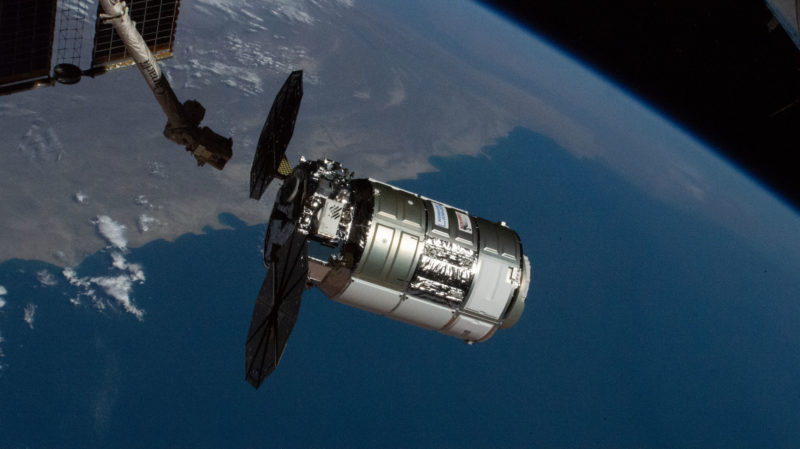
Shortly after arrival on 22 February, NG-15 was accessed by the Expedition 64 crew and time-critical payloads and cold bags were removed from the ship’s Pressurized Cargo Module (PCM). Cargo transfer operations were completed by 28 February. NG-15’s presence has enabled a remarkable amount of science and technology research aboard the station, spanning both Expedition 64—which ended in April—and the ongoing Expedition 65.
One notable payload is the second flight of the Hewlett Packard Enterprise (HPE) Spaceborne Computer, which demonstrates the usefulness of high-performance, commercial off-the-shelf hardware for long durations aboard the ISS. The first Spaceborne Computer rode to orbit aboard SpaceX’s CRS-12 Dragon in August 2017 and operated without incident for 615 days, before it was returned to Earth aboard the CRS-17 Dragon in June 2019.
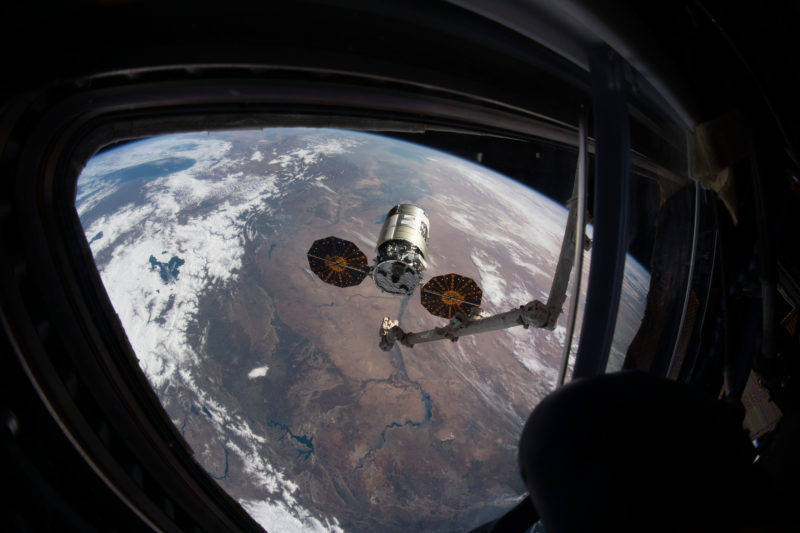
It functioned near-flawlessly on its first mission, despite unpredictable levels of high radiation and unique power and cooling conditions. It also achieved the significant milestone of running one teraflop, which equates to more than a trillion calculations in a single second; for comparison, this is over 30 times faster than an average laptop and closely approximates the performance of a ground-based supercomputer.
However, efforts to activate Spaceborne Computer-2 in early March met with significant delay, when the Expedition 64 team experienced difficulties with a tool needed to secure the payload into its Expedite the Processing of Experiments for Space Station (EXPRESS) rack. A new tool was launched the following month on the Crew-2 mission and the computer was successfully installed and brought to life on 29 April. It is expected to remain in active operational service for two years, before returning to Earth.
Original plans for NG-15 to depart in late May were pushed back to late June. Beginning in late May, efforts to transfer unneeded materials and trash aboard Cygnus got underway and Final Cargo Loading ahead of departure was completed last Tuesday, 22 June.
Overseeing Tuesday’s unberthing from the ISS will be Expedition 65 astronaut Megan McArthur. Following departure, the NG-15 vehicle will support the release of multiple CubeSats via SlingShot and NanoRacks deployment mechanisms, prior to deorbit and a destructive re-entry.
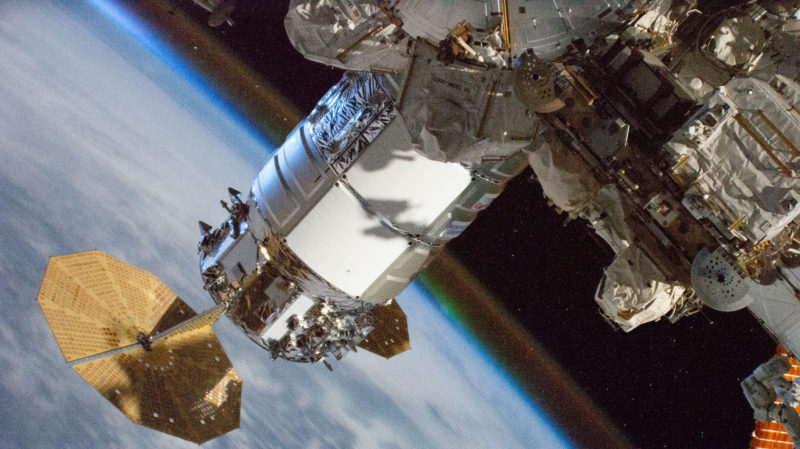
Looking ahead, NG-16 is slated to launch no earlier than 10 August, having been moved to the right in part to accommodate the scheduled 30 July target for the second Orbital Flight Test (OFT-2) of Boeing’s CST-100 Starliner. One payload flying uphill on NG-16 is the second ISS Roll-Out Solar Array (iROSA) modification kit.
The next scheduled U.S. Extravehicular Activity (EVA) is presently scheduled for late August and will see astronauts install the “mod kit” onto Power Channel 4A of the station’s P-4 truss. According to the current manifest, the next two pairs of iROSAs will be launched on the CRS-25 and CRS-26 Dragon cargo missions, provisionally scheduled for NET April and September 2022.
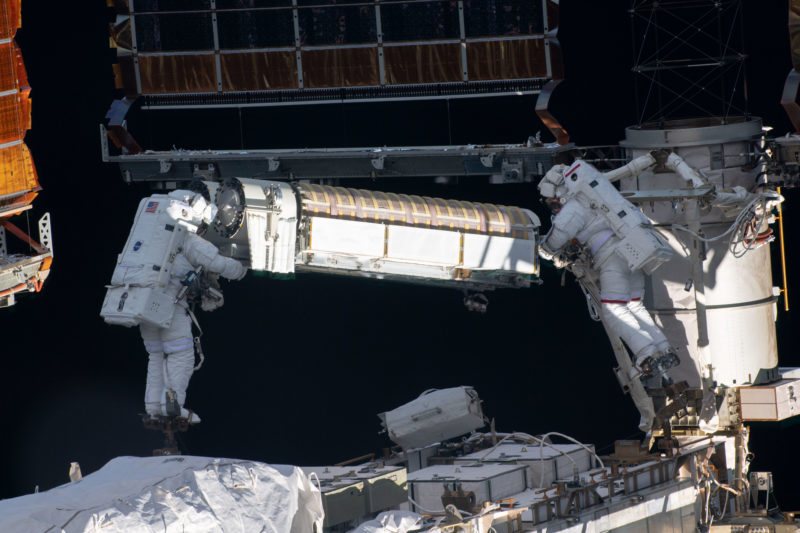
As previously detailed by AmericaSpace, three pairs of iROSAs—totaling six new solar arrays, each some 60 feet (18.2 meters) long when fully unfurled—will augment (and “shadow”) six of the station’s eight “legacy” Solar Array Wings (SAWs) and furnish an electrical power hike of 20-30 percent. Installation of the first pair of iROSA arrays on the P-6 truss was completed last Friday, following a challenging three-spacewalk marathon by Expedition 65 astronauts Shane Kimbrough and Thomas Pesquet.
The next two pairs of iROSAs will be installed to cover Power Channels 4A and 3A on the P-4 and S-4 trusses, respectively. They will be followed by the final two iROSAs, which will be fitted to Power Channel 3B on the S-6 truss and Power Channel 1A on the S-4 truss.
Quelle: NS
----
Update: 1.07.2021
.
Cygnus supply ship departs space station after four-month mission
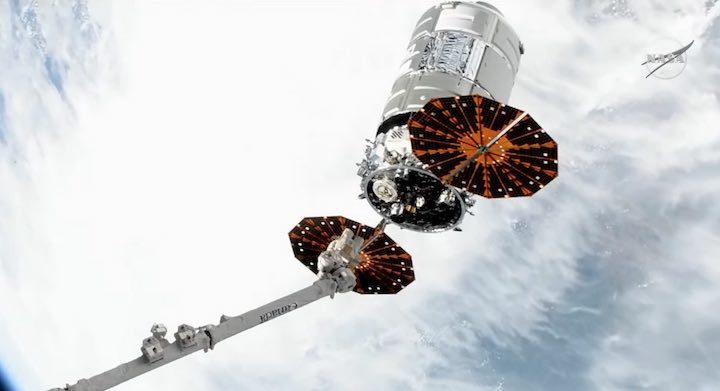
A Cygnus spacecraft owned by Northrop Grumman departed the International Space Station Tuesday, concluding a four-month mission that delivered more than 8,000 pounds of cargo. The automated resupply freighter will deploy five small CubeSats before re-entering the atmosphere and burning up over the Pacific Ocean.
Ground controllers commanded the space station’s Canadian-built robotic arm to release the Cygnus spacecraft at 12:32 p.m. EDT (1632 GMT) Tuesday as the complex sailed 270 miles (434 kilometers) above Wyoming.
NASA astronaut Megan McArthur monitored the spacecraft’s departure from inside the space station.
The Cygnus spacecraft arrived at the space station Feb. 22, two days after launching on an Antares rocket from Wallops Island, Virginia. After capturing the Cygnus spacecraft, the robotic arm maneuvered the ship to the nadir, or Earth-facing, port on the space station’s Unity module.
Northrop Grumman named the Cygnus supply ship the S.S. Katherine Johnson in honor of the NASA mathematician portrayed the film “Hidden Figures.”
The spacecraft delivered to the space station new astronaut sleeping quarters, parts for the outpost’s toilet, and numerous biomedical and technology experiments.
The mission, designated NG-15, marked the 15th cargo delivery to the space station by a Cygnus spacecraft since 2013. After unpacking 8,400 pounds (3,810 kilograms) of equipment inside the craft’s pressurized cabin, astronauts loaded about 7,180 pounds (3,256 kilograms) of trash into the freighter for disposal, a NASA spokesperson said.

The astronauts also installed CubeSats onto a rail deployer on the Cygnus hatch before the robotic arm removed the freighter from the Unity berthing port.
After flying a safe distance from the space station and climbing into a higher orbit, the Cygnus spacecraft will deploy five small nanosatellites.
The Gunsmoke-J technology demonstration satellite is a 3U CubeSat for the U.S. Army Space and Missile Defense Command, which aims to prove the usefulness of an Earth-imaging payload for tactical use by military combat troops.
“This science and technology effort will provide new and advanced capabilities to the tactical warfighters in a small satellite that is about the size of a loaf of bread,” the Army said in a press release last year. “The effort will also help inform future acquisition decisions.”
The Gunsmoke-J satellite and two other small satellites for unspecified U.S. government customers launched inside the Cygnus spacecraft’s pressurized module in February, then were mounted on the Slingshot deployer on the craft’s forward hatch by the space station crew.
The Army’s first Gunsmoke-J tech demo satellite launched in March on a Rocket Lab Electron rocket. This will be the second unit to deploy into orbit.

Spaceflight, the Seattle-based rideshare launch broker, arranged launch services for the Gunsmoke-J and the two other U.S. government satellites.
Two other CubeSats are also aboard the Cygnus cargo freighter for release from a Nanoracks deployer. One is named IT-SPINS, and it will collect images of the ionosphere over the night side of the Earth during a six-month research mission. The IT-SPINS CubeSat, about the size of a toaster oven, was developed at Montana State University.
A CubeSat named DhabiSat will also be released into orbit. The small spacecraft was developed by students at Khalifa University in Abu Dhabi. Students designed and built the CubeSat with help from Yahsat, a communications satellite company in Abu Dhabi, and Northrop Grumman.
Once the CubeSats are deployed, Northrop Grumman’s mission control team will command the Cygnus spacecraft to perform a deorbit burn to burn up during re-entry over the Pacific Ocean on Thursday.
Quelle: SN
